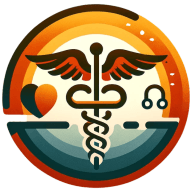How Can Process Improvement Reduce Errors in Healthcare?
Imagine reducing errors in healthcare facilities to transform patient outcomes. Insights from a Board-Certified Physician Specializing in Interventional Pain Management and a CEO provide practical solutions. The first strategy features the implementation of Electronic Health Records, while fostering a culture of continuous improvement wraps up our seven powerful lessons learned. Each tip serves as a valuable step towards minimizing mistakes and enhancing healthcare quality.
- Implement Electronic Health Records
- Streamline Care Coordination
- Standardize Healthcare Procedures
- Adopt Process Mapping
- Automate Repetitive Healthcare Tasks
- Leverage Data Analysis
- Foster Continuous Improvement Culture
Implement Electronic Health Records
As a healthcare professional, one of the most effective process improvements we
implemented in our facility was an electronic health record (EHR) system integrated
with clinical decision-support tools. This transition has dramatically reduced errors
related to medication prescriptions and documentation.
Previously, handwritten notes often led to misinterpretations and medication errors. The
EHR standardizes documentation, ensuring accurate and easily accessible patient
information. More importantly, it provides alerts for potential drug interactions and
allergies, empowering our clinicians to make informed decisions at the point of care.
Additionally, the system's tracking features allow for real-time updates on patient status
and treatment plans, reducing the risk of miscommunication among team members.
This improvement has fostered a culture of accountability and precision, improving
patient outcomes and significantly reducing medical errors.

Streamline Care Coordination
As an experienced health IT leader, streamlining care coordination at my company has significantly reduced errors. By implementing electronic health records (EHRs) across our facilities, physicians have access to patients' full medical histories, allowing for faster, more accurate diagnoses and treatment.
For example, EHRs provide medication alerts to prevent dangerous drug interactions. They also enable real-time communication between doctors, so specialists receive urgent patient referrals immediately. At one hospital, this cut referral wait times by over 60% in just 6 months.
We developed EHR software customized for each facility's needs. An agile, model-driven approach allowed us to meet physicians' and patients' needs efficiently. EHRs have increased administrative efficiency, like enabling patients to schedule appointments or request prescription refills online, freeing staff to focus on care.
EHR data is a goldmine for improving care, but it must be protected. We implement robust security to guard patients' privacy, using techniques like role-based access control, encryption, and staff training. While cyber threats are ongoing, a strong healthcare IT team can help any organization leverage technology to provide the best care.
Standardize Healthcare Procedures
Standardizing procedures in healthcare is crucial because it reduces the variation that often leads to mistakes. When all medical staff follow the same steps, there is less room for error. Consistent procedures also ensure that everyone is on the same page, improving overall teamwork and communication.
This can lead to better patient outcomes and less stress for healthcare workers. Join in the effort to make procedures more consistent and reliable.
Adopt Process Mapping
Process mapping is an effective method for identifying and removing steps in healthcare that do not add value. By examining each part of a process, it becomes clear where redundancies or inefficiencies lie. Eliminating these unnecessary steps streamlines the workflow, making it faster and less prone to mistakes.
As a result, patient care improves because processes are more straightforward and easier to manage. Act now to implement process mapping in your organization for better efficiency.
Automate Repetitive Healthcare Tasks
Automating tasks in healthcare settings can significantly lower the potential for human error, especially in repetitive processes. Machines and software can handle tasks without fatigue, ensuring a higher level of precision. This allows healthcare professionals to focus on more complex and patient-centric activities, enhancing the quality of care.
Automation also helps in maintaining accurate records and timely updates. Invest in automation tools today to minimize risks and improve care quality.
Leverage Data Analysis
Using data analysis in healthcare helps uncover patterns in errors, making it easier to target specific areas for improvement. By examining data, it becomes possible to identify common mistakes and their root causes. This insight allows healthcare providers to develop strategies that directly address these issues, leading to fewer errors.
Data-driven decisions ultimately contribute to safer and more efficient patient care. Start leveraging data analysis now to uncover and address error patterns.
Foster Continuous Improvement Culture
A continuous improvement culture encourages constant vigilance and proactive efforts to identify and reduce errors in healthcare. When everyone in an organization is committed to improvement, there is an ongoing process of finding and fixing issues. This culture promotes a mindset where errors are seen as opportunities to learn and improve.
As a result, the overall quality of care improves steadily over time. Advocate for a culture of continuous improvement to make lasting changes.


